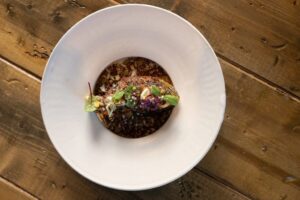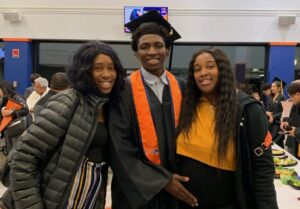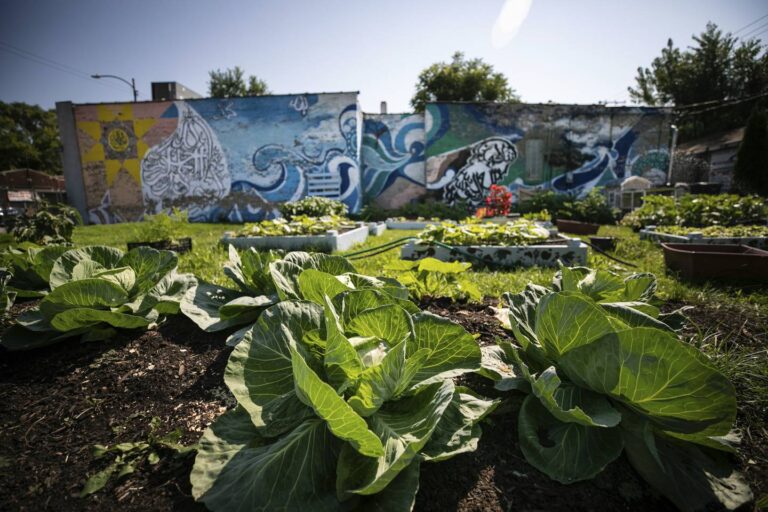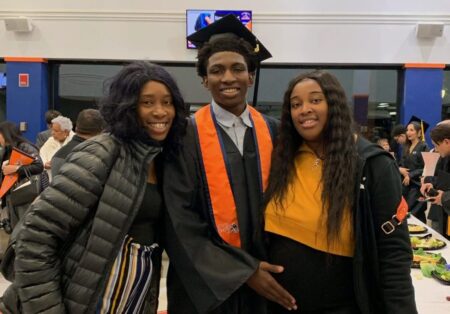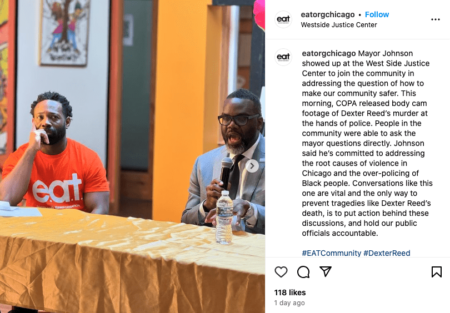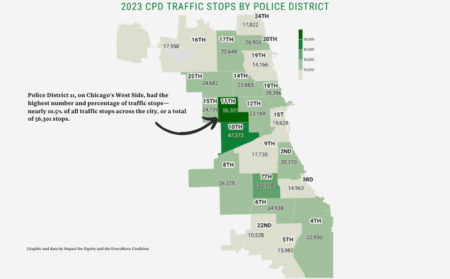If you visit a community garden in Chicago — or if you get your cabbage, tomatoes, peppers or carrots from one — chances are Gregory Bratton helped establish it.
Bratton, 69, has helped create close to 300 gardens in low-income neighborhoods across the city that have little access to fresh food. He has personally managed and tended to about a third of those gardens in the last decade.
Advertisement
Now, he’s fighting lung cancer again, four years after the disease went into remission. And he needs help with his gardens in the form of volunteers, funds, lumber and prayers.
It’s his fifth fight with cancer since 1999, he says in between frequent coughs, but “this time, it’s something different.”
Advertisement
At the quiet intersection of East 75th Street and South St. Lawrence Avenue, the Pause for Peace community garden — like many of Bratton’s gardens — is a colorful oasis in between concrete buildings, an empty lot where Bratton spread soil and planted grass. Corn, spaghetti squash, cabbage, peppers and pear, apple and cherry trees grow in the soil, in garden boxes, in plastic containers.
African squash, Bratton said, is his favorite.
A gazebo painted with the colors of the rainbow and used for yoga and reiki classes stands in the middle of the garden. Behind it, two Little Free Libraries stand near where Bratton plans to plant a raspberry bush. A rooster and two hens — Mr. Johnson, Maggie and Hot Sauce — are often out and about, their coop stationed next to a stone statue of a lion.
The produce harvested from the gardens is given free to community members.
“I teach people how to be sustainable, organically to feed themselves,” Bratton said. “The two gardens that I’m trying to save right now are standing two and a quarter mile to the nearest grocery store.”
Bratton is seeking to preserve the Trayvon Martin Community Everlasting Garden and the Laquan McDonald Community Garden at East 85th Street and South Escanaba Avenue by putting a 6-foot fence around the gardens, at a cost of about $1,100, and preparing them for the winter, he said.
The pandemic has left him short of volunteers to do the work, Bratton said, because people haven’t wanted to be physically near one another. He has about eight people who volunteer regularly in his gardens, but he said he could use more hands.
Volunteers can help water, harvest and plant produce as well as build garden boxes and plan events at the gardens, Bratton said.
Advertisement
In addition to needing money for fencing and lumber for garden boxes, Bratton said he is trying to raise money to cover the cost of using water from city hydrants.
Bratton has started four gardens this summer that also need volunteers, the newest being Pause for Peace. The other three are the St. Lawrence Community Garden at East 67th Street and South St. Lawrence Avenue, the Girls Like Me Community Garden at East 49th Street and South Indiana Avenue and the African Garden at East 76th Street and South Saginaw Avenue.
Community gardens are about more than food access and security — although both are important, according to Howard Rosing, a cultural anthropologist from DePaul University.
“From all our research, it illustrates that community gardens are mostly driven by people’s passion to come together with their neighbors and do something that allows them to engage, but also allows them to beautify the neighborhood and produce food that is culturally appropriate, culturally relevant,” Rosing said.
Taking a break from watering vegetables, flowers and fruits at Pause for Peace, one of Bratton’s volunteers, Ameena Fort Matthews, said the gardens provide a peaceful, safe gathering place for people of all ages, and so access to food and shelter becomes a means of violence prevention.
“This is what is needed here,” she said.
Advertisement
Melzena Johnson, 48, gets food from the Trayvon Martin Community Everlasting Garden almost every weekend. Her favorite produce: collard greens and peppers. Garden-grown greens have a different feel and are sweeter than store-bought ones, she said.
“Whatever (help) you guys want to give Mr. Bratton, he’s due deserving for it, definitely,” Johnson said.
Bratton’s gardening knowledge is “almost encyclopedic,” according to Rosing, who last ran into Bratton while doing work on food systems at the Stein Learning Gardens at St. Sabina.
“I kind of put him in this group of folks that are sort of treasures of Chicago,” Rosing said. “I feel as if he has a sense of humility and wisdom that is unique — but when I say wisdom, what I’m referring to is both the knowledge of how to connect with communities in a culturally relevant way, especially on the South Side of Chicago, but also really, the art and craft of producing food.”
The majority of community gardens in the city, Rosing said, are on the West and South sides. “That, in itself, is interesting, given divestment in many West Side and South Side communities over decades,” he said.
In February 2020, the city “significantly increased the cost of water and decreased access to water by community gardens,” Rosing said. “ And right now it’s being patched by philanthropy, for the most part. But really, these should be spaces that are subsidized and invested in by the city because they’re such important assets, especially in areas that have been divested.”
Advertisement

Afternoon Briefing
Daily
Chicago Tribune editors’ top story picks, delivered to your inbox each afternoon.
Bratton said he will likely begin treatment soon.
“I’ll be 70 years old in two months, in October,” he said. “My spirit is a little weak. I just need people behind me to pray.”
Fort Matthews said Bratton doesn’t want to let go, despite his fragile health. The gardens keep his spirits high.
Sitting on a folding chair to catch his breath, Bratton explained himself. “Everybody’s saying I need to slow down. Do you know what would happen if I slowed down?” he asked. “I would die. I would be a dead man walking. I wouldn’t know what to do with myself.”
So he tends to his gardens.
“Just come out, pay a visit, be a part of (it),” he said.
Advertisement
